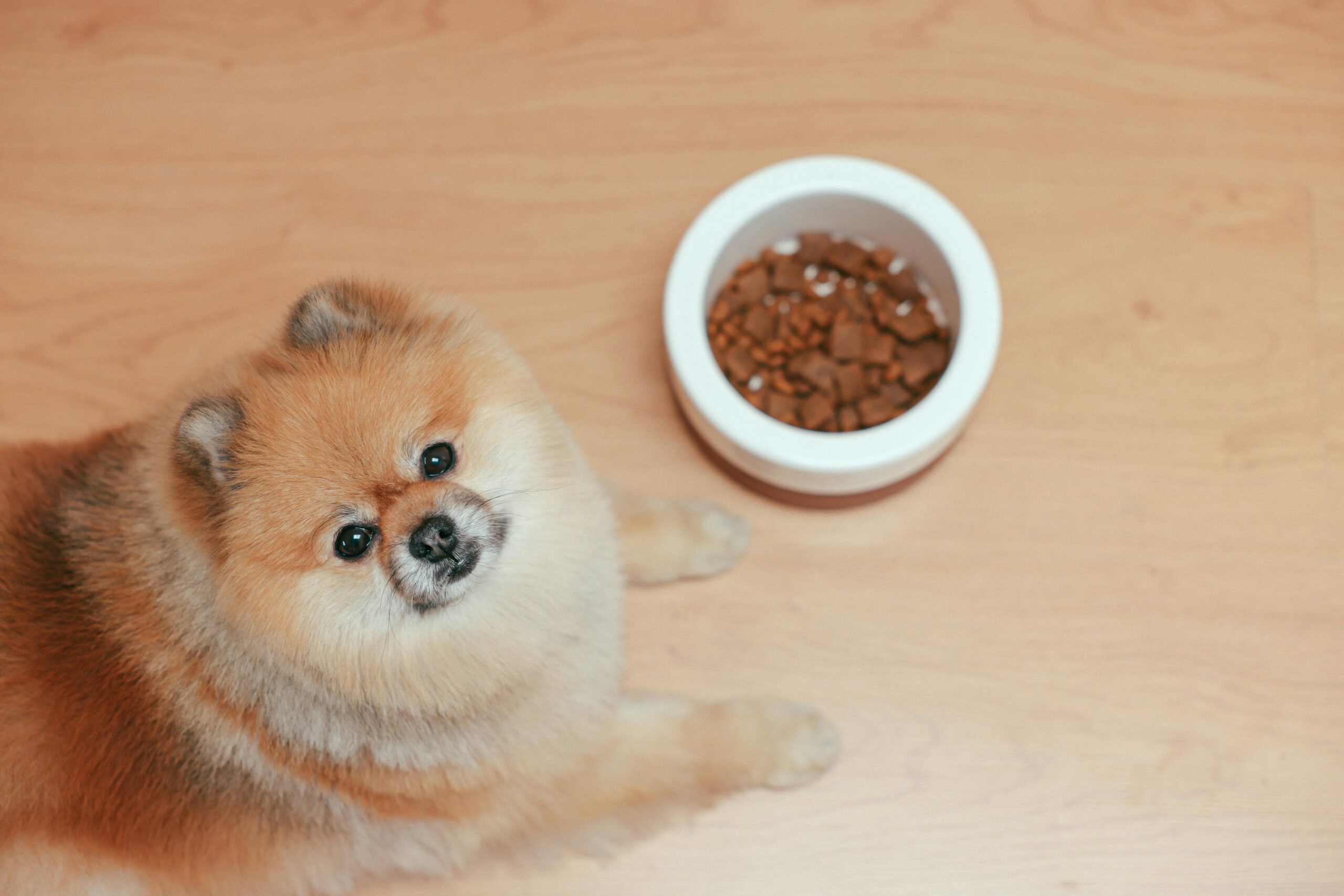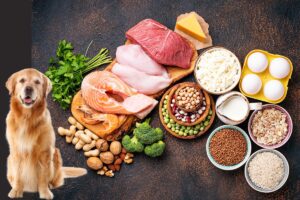Understanding your dog’s calories needs is essential for maintaining their overall health and well-being. Just as humans have unique energy requirements based on factors like age, weight, and activity levels, dogs also require tailored nutrition to thrive.
However, deciphering how many calories your furry friend truly needs can be a bit of a puzzle. Factors such as breed, metabolism, and lifestyle all play a critical role in determining their ideal caloric intake. In this article, we’ll break down the science behind dog calories, explore the factors that influence their daily requirements, and provide actionable tips for maintaining a healthy balance.
Whether you’re feeding a playful puppy, a working dog, or a senior companion, meeting their energy needs isn’t just about preventing obesity—it’s about supporting their vitality and ensuring they live their happiest life.
By the end of this guide, you’ll have a clear understanding of how to calculate your dog’s caloric needs, interpret dog food labels, and adjust their diet to suit their lifestyle. Let’s dive into the world of dog calories and discover how to optimize your pup’s diet.
Table of Contents
The Basics of Dog Calories and Why They Matter
At its core, a calorie is a unit of energy. Dogs, like all living creatures, require calories to fuel their bodies for activities like walking, running, playing, and even sleeping. Calories also power essential bodily functions, such as digestion, respiration, and maintaining a healthy immune system. When a dog consumes the right amount of calories, they maintain their ideal weight, stay energetic, and avoid health complications linked to undernutrition or overfeeding.
What Are Dog Calories?
Dog calories are simply the units of energy that a dog’s body derives from the food they eat. This energy is necessary to maintain their Basal Metabolic Rate (BMR), which accounts for the energy needed to sustain life at rest, and their daily activities, whether it’s chasing a ball or lounging in the sun.
However, not all calories are created equal. The source of these calories—proteins, fats, and carbohydrates—plays a significant role in their overall health. Protein supports muscle development, fat provides a concentrated source of energy, and carbohydrates offer a quick energy boost. Balancing these macronutrients in your dog’s diet is crucial for ensuring their caloric intake supports their specific needs.
Factors That Determine Your Dog’s Caloric Needs
Every dog is unique, and their caloric requirements vary widely depending on several factors. Here’s a detailed breakdown of the primary considerations:
1. Breed and Size
- Small Dogs: Breeds like Chihuahuas and Yorkshire Terriers often have faster metabolisms than larger breeds, meaning they require more calories per pound of body weight.
- Large Dogs: Great Danes or Mastiffs, on the other hand, may need a higher overall caloric intake but fewer calories per pound due to slower metabolic rates.
Example: A 10-pound Chihuahua may require around 400-500 calories per day, while a 70-pound Labrador Retriever might need approximately 1,400-1,800 calories.
2. Age and Life Stage
- Puppies: Puppies grow rapidly and require higher caloric intake relative to their weight. Their diets should include nutrient-dense, high-calorie foods.
- Adult Dogs: Once a dog reaches adulthood, their caloric needs stabilize. The focus shifts to maintaining their weight and supporting their activity levels.
- Senior Dogs: Older dogs may require fewer calories due to decreased activity levels, though some may need extra calories to support age-related health conditions.
3. Activity Level
- Highly Active Dogs: Working dogs, sporting breeds, and pups who regularly participate in agility or outdoor activities will need significantly more calories to fuel their energy expenditure.
- Sedentary Dogs: Dogs that spend most of their time indoors and lead a less active lifestyle will require fewer calories to prevent weight gain.
4. Spaying or Neutering
Spayed or neutered dogs often experience a slight reduction in metabolic rate. Studies show that their caloric needs can decrease by 20-25% post-surgery, making dietary adjustments critical to prevent unwanted weight gain.
5. Health Conditions
Certain health conditions, such as hypothyroidism or diabetes, can alter your dog’s caloric requirements. Dogs recovering from surgery or illness may also need additional calories to support healing.
How to Calculate Your Dog’s Caloric Needs
To determine how many dog calories your pup needs per day, you can follow a simple formula known as the Resting Energy Requirement (RER). The RER is calculated as follows:
RER (calories/day) = 70 x (body weight in kg)^0.75
Once you calculate the RER, you’ll need to adjust it based on your dog’s activity level and life stage using a multiplier. Here’s a general guideline for these multipliers:
- Inactive/Senior Dogs: RER x 1.2
- Neutered/Spayed Adult Dogs: RER x 1.6
- Intact Adult Dogs: RER x 1.8
- Working or Highly Active Dogs: RER x 2-5
- Growing Puppies (0-4 months): RER x 3
- Growing Puppies (4+ months): RER x 2
Example Calculation:
For a 30-pound (13.6 kg) adult neutered dog:
- Calculate RER: 70 x (13.6^0.75) ≈ 480 calories/day.
- Adjust for neutered adult: 480 x 1.6 = 768 calories/day.
This dog would need approximately 768 calories daily to maintain their weight.
Reading Dog Food Labels to Measure Calories
Commercial dog food labels often include caloric information, typically listed as kcal per cup or can. This makes it easier to match your dog’s daily caloric needs with the appropriate portion sizes.
When analyzing dog food labels:
- Look for the Guaranteed Analysis to understand the macronutrient breakdown.
- Pay attention to the serving size recommendations, but remember that these are general guidelines. Adjustments based on your dog’s specific needs may be necessary.
- Use a kitchen scale to measure food portions accurately, especially if your dog is prone to weight fluctuations.
Adjusting Dog Calories for Weight Management
Maintaining a healthy weight is crucial for your dog’s longevity. Here are strategies for adjusting their caloric intake based on their weight goals:
For Weight Loss:
- Reduce caloric intake by 10-20% and monitor their progress over several weeks.
- Focus on high-protein, low-fat foods that keep your dog full while reducing overall calories.
- Incorporate more physical activity into their routine.
For Weight Gain:
- Gradually increase their caloric intake by 10-15%.
- Choose calorie-dense foods, such as those high in healthy fats.
- Rule out any underlying health conditions that may be causing weight loss.
Tips for Feeding Your Dog the Right Calories
- Use a Dog Calorie Calculator: Online calculators can provide a quick estimate of your dog’s caloric needs based on weight, age, and activity level.
- Monitor Their Weight: Regularly weigh your dog and adjust their diet accordingly.
- Consult a Veterinarian: Always consult your vet before making significant changes to your dog’s diet, especially if they have health conditions.
- Incorporate Treats Wisely: Treats should make up no more than 10% of your dog’s daily caloric intake.
Conclusion
Understanding dog calories and how they impact your pup’s health is a cornerstone of responsible pet ownership. By taking into account factors like breed, size, age, activity level, and overall health, you can tailor their diet to meet their specific energy needs. Ensuring your dog consumes the right amount of calories each day isn’t just about maintaining their weight—it’s about fostering a long, happy, and active life.
Whether you’re calculating their caloric needs using formulas like the Resting Energy Requirement (RER) or carefully portioning their meals based on food labels, every effort you make contributes to their overall well-being. Don’t forget to account for treats and adjust their caloric intake as their activity levels or life stages change. Regular monitoring of your dog’s weight and consulting with your veterinarian will help ensure they stay on the right track.
With this knowledge in hand, you’re now equipped to make informed decisions about your dog’s diet. A healthy, well-fed dog is a happy dog—and a happy dog makes for a joyful home. So, take the time to evaluate your pup’s calorie needs and feed them with the care and love they deserve!






Pingback: Can Dogs Eat Ice Cream? The Sweet and Cold Truth
Pingback: 6 Steps to Effective Dog Paw Care